
When you imagine going outside- you think about relaxing and enjoying all of the beautiful things nature has to offer. When you’re focusing on the great things, you tend to forget all of dangerous things that could happen. Nature has certain ways to warn you that something bad is about to happen, but not everyone knows the major signs to look for. Here is a list of early warning signs of a natural disaster.
1. Watch out for a patch of J-shaped trees
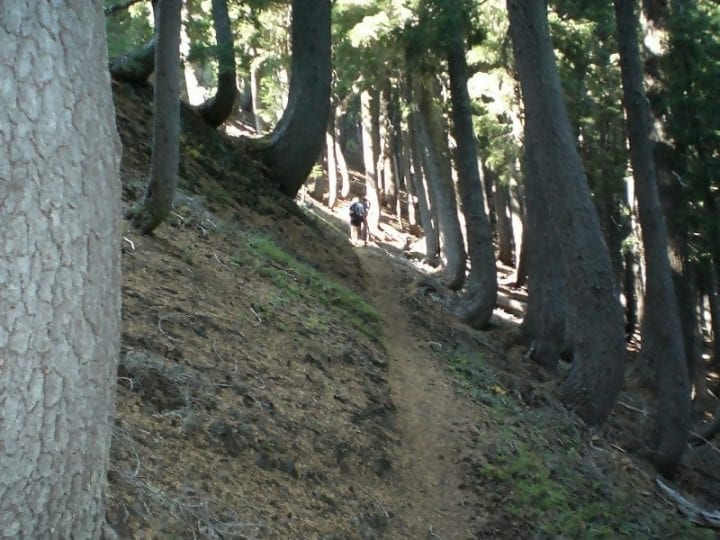
You may have walked away from a very dangerous experience if you’ve ever seen a patch of J shaped trees. A patch of J shaped trees is a sign that a landslide is approaching. The trees grow into this shape, due to the ground moving slowly. Another warning sign that a landslide may be approaching is cracking in the ground such as in the street, dirt, or sidewalk. Landslides take place on slopes; try to stay in a flat area, if possible.
2. When the ocean level drops, danger is near
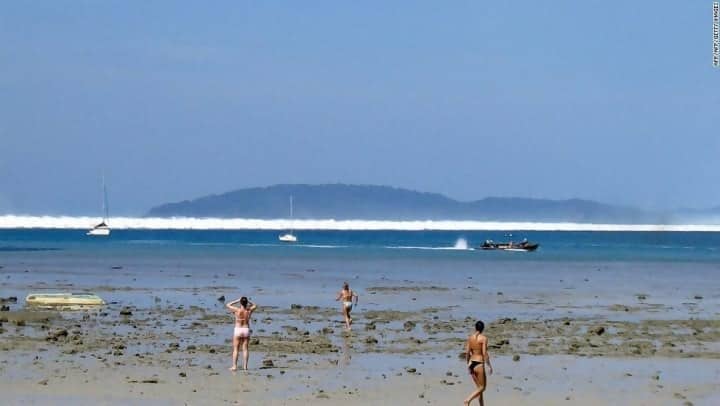
If you are on the beach, and the water begins receding- you need to leave as fast as you can. If the coral reefs begin uncovering you may be in danger. This is a sign that a tsunami may be coming. Tsunamis can occur in any ocean; however, they are most common in the Pacific Ocean. A tsunami forms when an earthquake occurs underwater. Waves can move as fast as 500 miles per hour across the ocean.
3. Wall cloud in the sky? Take shelter
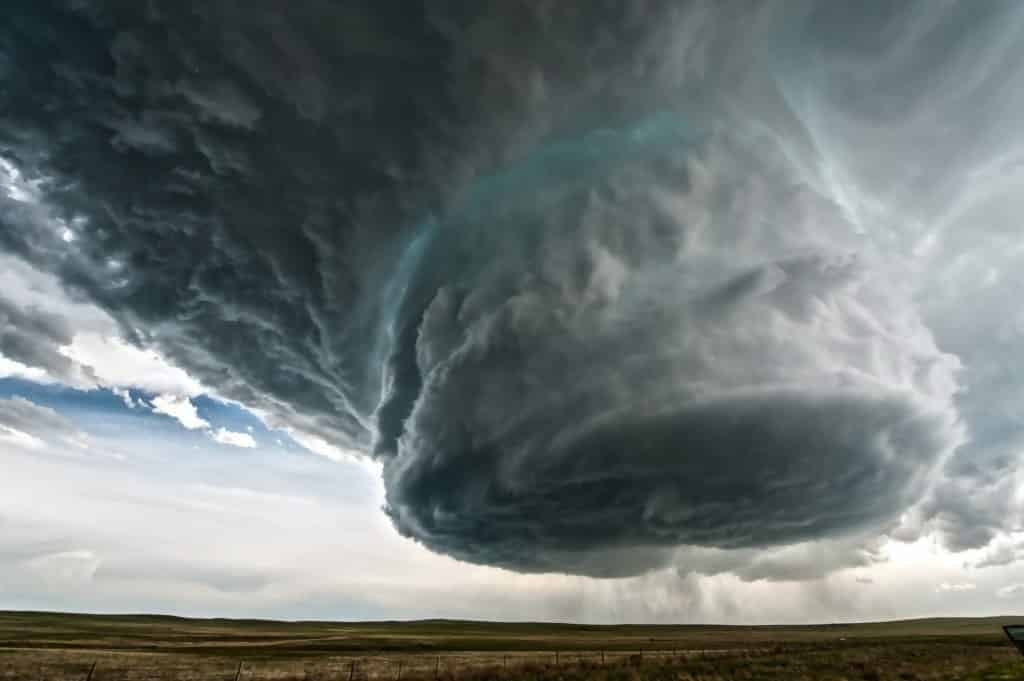
If you come across a wall cloud, it’s time to take shelter. Wall clouds sit low, and can be up to five miles long. The wall cloud is formed due to the air rising quickly making the pressure drop below the storm. If the cloud starts rotating it can create a tornado, which means take shelter- now.
4. Stay away from the channel of choppy waters at the beach
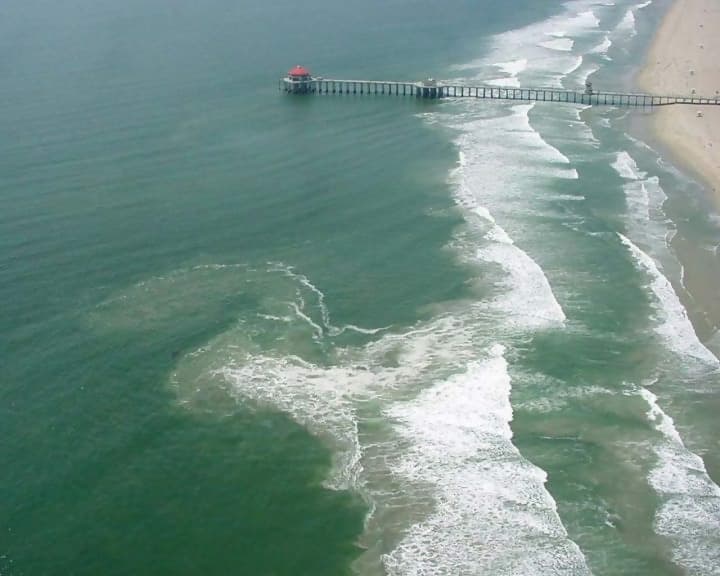
If there’s a channel of choppy water on the beach or other movements such as; a gap in the line of waves, or seaweed moving in a strange way from the shore, more than likely it’s a rip current that lies beneath the water’s surface. Rip currents are underestimated in how dangerous they are. Rip currents are responsible for killing over 100 people yearly in the U.S. If you are to ever get caught in a rip current, swim parallel to the shore to break out of the channel, and then at an angle to shore.
5. An earthquake might be coming, if animals start leaving
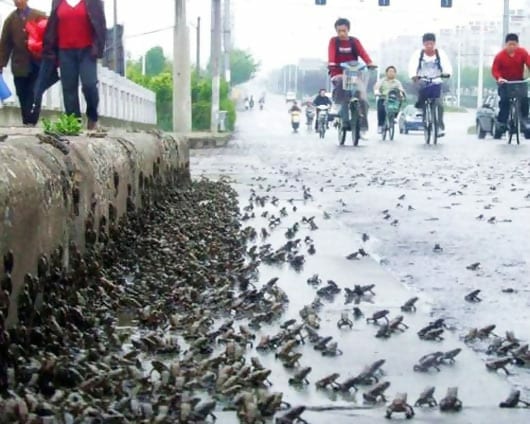
It’s been noted that animals such as; snakes, rats, and insects leave their homes a few days before a big earthquake. This behavior by animals is not backed by science, unfortunately. Animals can identify earthquakes before humans can, due to being able to feel the tiny initial waves that we are unable to sense.
6. If animals start running toward you, there could be a fire behind them
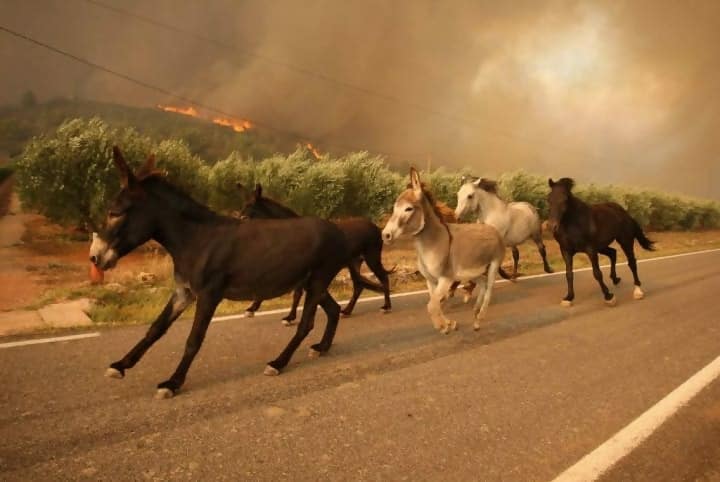
If you see an animal run toward you, there could potentially be a wildfire behind them. Amphibians like to burrow themselves in the ground to escape from the fire, while other animals will run away from the fire as swiftly as they can. If you’ve watched a western film; more than likely, you’ve seen a scene of a pack of horses running away from an untamed fire. Animals are a great way to sense if there’s a fire; however always look for smoke. That’s your best indication that there’s a fire.
7. If your hair stands up, take shelter
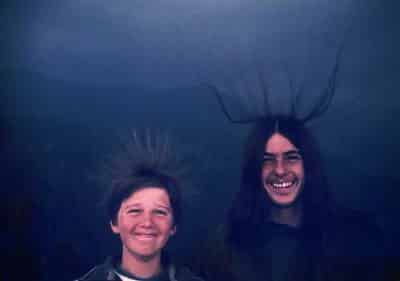
It may seem like getting struck by lightning is far-fetched; however, more people get struck by lightning than unprovoked shark attacks. More people are becoming educated on the dangers of lightning; therefore, the annual deaths are reducing. An indication that lightning is near; is your hair may stand up and your jewelry may buzz. If you experience these warning signs, take shelter immediately. If you aren’t able to take shelter-crouch low to the ground, and touch the ground as little as possible.
8. Sharks swimming to deeper waters means a possible hurricane is on its way

If you are on a boat in the middle of the ocean, and you see a heard of sharks swimming deeper in the water, it’s possible a tropical storm or hurricane is on its way. They are possibly detecting the drop in the barometric pressure that comes with the storm. When there is a heard of sharks swimming towards deep water; it means possible danger is coming and they are trying to get away from it. It doesn’t necessarily mean they are coming to attack you, like movies paint them to do. Most movies draw them out to be monsters. Usually they don’t attack unless they are provoked. More than likely, they sense danger and are just trying to get to safety.
9. Run to high ground, if you hear a roar of rushing water
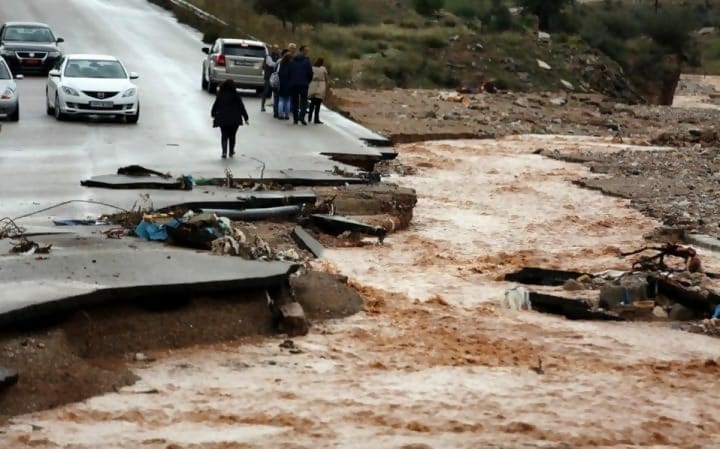
If you hear a roar of rushing water, after it’s been raining profusely- get to high ground swiftly. More than likely, a flash flood is about to spill out in front of you. Floods are actually the second most deadly form of severe weather (in the U.S). Flash floods are exceptionally strong. Broken dams and heavy rain can cause a flash flood. Flash floods are so powerful they can actually drag bridges and uproot trees.
10. A storm may be coming, if all of the golden- winged warblers disappear.
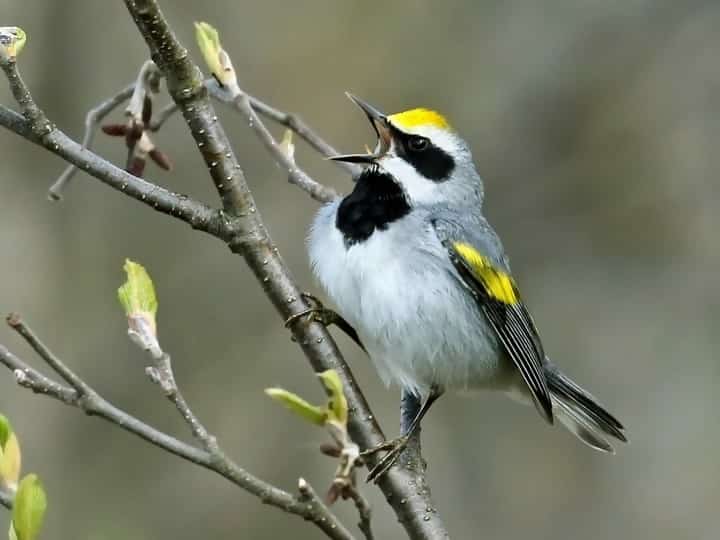
If all of the golden-winged warblers suddenly disappear, it’s possible a dreadful tornado is coming. It’s not a proven fact if animals leave before an earthquake, but there are occasions that may lead to this discovery. In 2014, a few of scientists studied a group of these birds in Tennessee. One day, they all suddenly disappeared. After they studied these birds intently, the scientists realized they actually traveled to Florida. One was found in Cuba. All of the birds came back to Tennessee, a few days later. The scientists believe the birds heard low-frequency infrasound coming from the storms. Birds can hear infrasound, but humans can’t.
11. Tomorrow’s weather can actually be predicted by a ring around the sun or moon
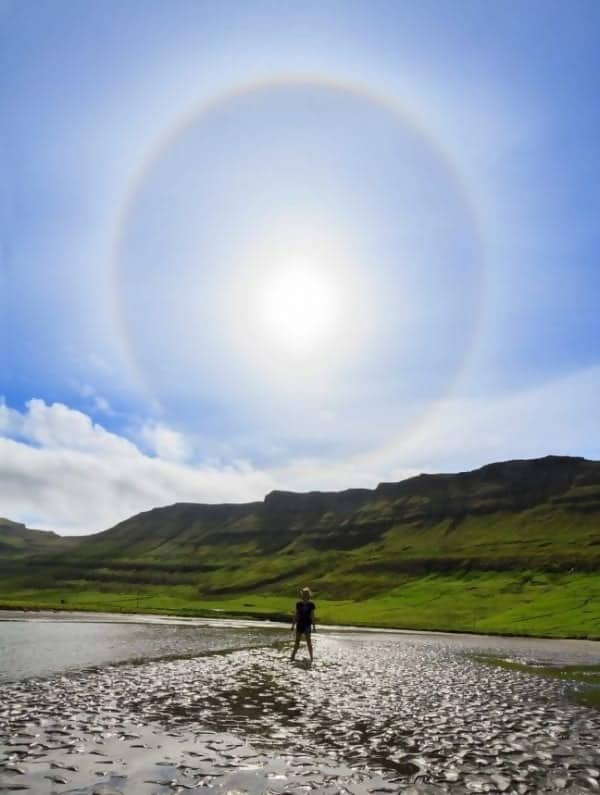
You may have noticed a glow around the sun or a halo around the moon, every once in a while. The rings are formed when thin, high up cirrus clouds shift above you. These cloud are made of little ice crystals that split and reflect the light, creating the beautiful ring above the moon or sun. The clouds often come before a storm, the ring means rain will be coming within a day or two. For now, at least the halo is beautiful.
12. Don’t go into the water, if you see dead fish on the beach
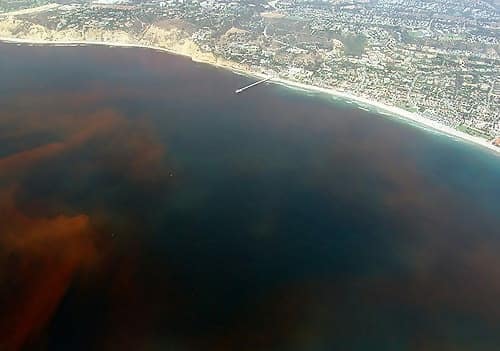
If you see an excessive amount of deceased fish or animals on the beach, don’t go into the water. More than likely, it could mean the water is toxic. One dead fish isn’t really anything to worry about, but you should be on alert if there’s an exuberant amount of dead fish on the beach. It could be possible that “red tide” is gathering in the water near the beach. Red tide is when the water is full of more toxic algae than normal. The water usually turns a red or brown color; however, it could stay a normal blue color. Going into the water could give you an itchy throat or a cough- rinsing off thoroughly should allow the issues to go away.
13. Go to the doctor, if your dog seems concerned about a part of your body.

Dogs have an incredible sense of smell, if your dog keeps licking or sniffing at a particular body part- you should get it checked out. Dogs are actually able to sniff out evidence of cancer. Scientists think dogs can smell organic compounds coming from cancer. They have actually proven that dogs can distinguish cancer patient’s urine from cancer free patient’s urine.
14. Cracked snow underfoot could mean an impending avalanche
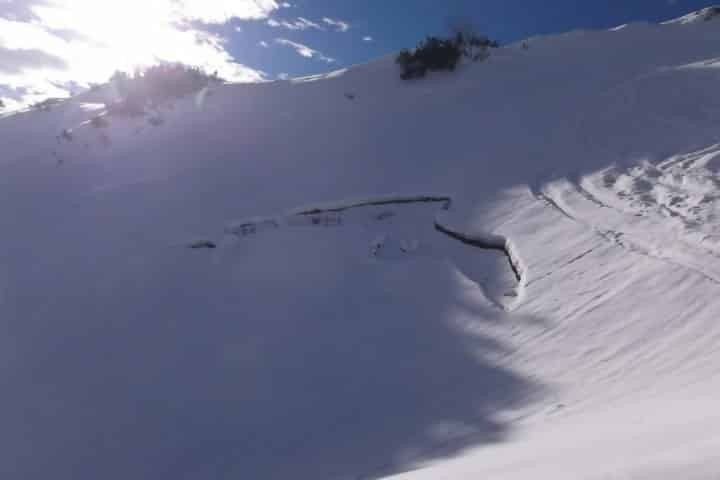
Skiing is fun, until a dangerous natural disaster occurs. Avalanches can move now as fast as 80 miles an hour. Unfortunately, most people sink in the snow. When you walk on the snow, look for signs. Does it feel hollow, do you hear a “whumping” sound, or are their cracks in the snow around your feet? Check all of your surroundings and look for signs. It could save you from being caught in an avalanche.
15. Rising water levels are a warning that a flood is coming

If you see the water level in a stream or river rising, after a lot of rain- a flood is possibly coming. Another sign, a flood is near is the water may be a brownish color. It may be brown due to the quick moving water eroding the nearby sediment. If you’re ever unlucky enough to get caught in a flood while driving, turn around and drive away. It’s best to stay away from any water on the streets. The water can actually lift your car at just 2 feet deep. If you see standing water, just turn around.
16. If the ocean makes a strange roaring sound, get up high

Everyone loves the beautiful calming sound the ocean normally produces; however, there are times where it produces a roaring sound- almost like a train. This sound may be an indication that a tsunami is coming towards you. If you hear this sound, leave immediately. Most tsunamis are caused by earthquakes underwater; however, some may be caused by a meteorite crashing into the ocean.
17. If the sky is green, severe weather may be coming
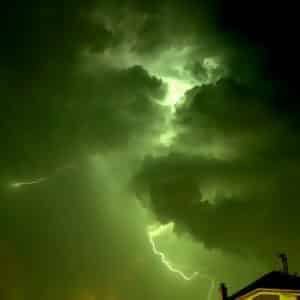
The green color may be a sign that the thundercloud is extremely tall, and warns that hail or a tornado may be on its way. The best places to hide during a tornado are; your basement, bathroom, and anywhere that is window free.
18. Stay away from lakes near volcanoes in hot environments
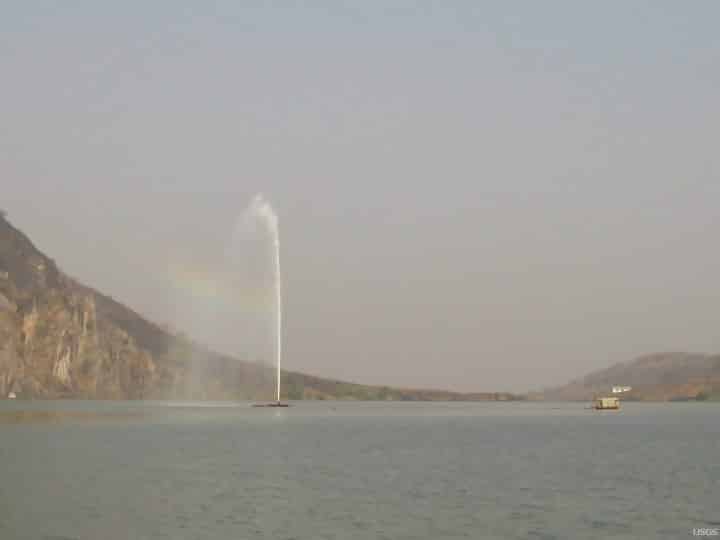
A lake that is located near a volcano, could be comparable to a shaken soda can that is just waiting to burst. The magma that’s underground could be pushing carbon dioxide into the bottom of the lake, where there is extreme pressure. Due to the intense year round temperatures, the lake never mixes and the gas never gets a chance to be released. If a heavy rainfall disturbs the lake, it explodes in what is called a limnic eruption. Carbon dioxide erupts and water bursts out, killing just about everything for miles around it.
19. Square waves means danger
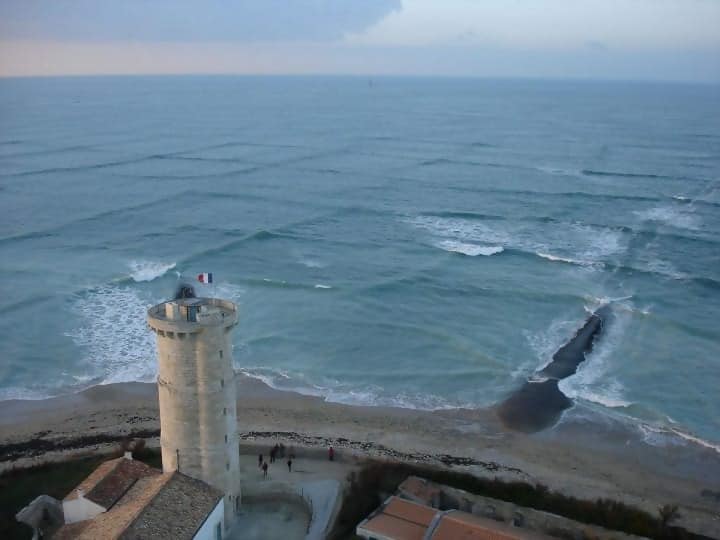
It doesn’t seem like it’s possible for the ocean to create this pattern; however, when it does it can be dangerous for swimmers, surfers, and boats. The squares create a strong current that can actually carry you out to sea. It also, creates a tough environment for boats. Many ships wreck, due to the cross seas.
20. If you see clumped streaks in the sky, get to safety.
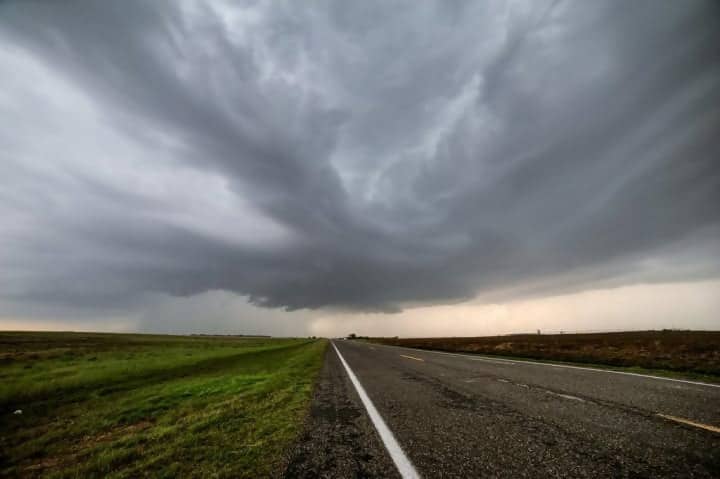
If you see clouds that are formed in long streaks, that rotate and stretch into the main thunderstorm- find shelter immediately. It could be a warning sign that a tornado is on its way. The streaks are called “inflow bands”. The bands indicate the storm is drawing in low level air from afar. They sit low in the sky.
21. If the water is green or has a smell, don’t go in.
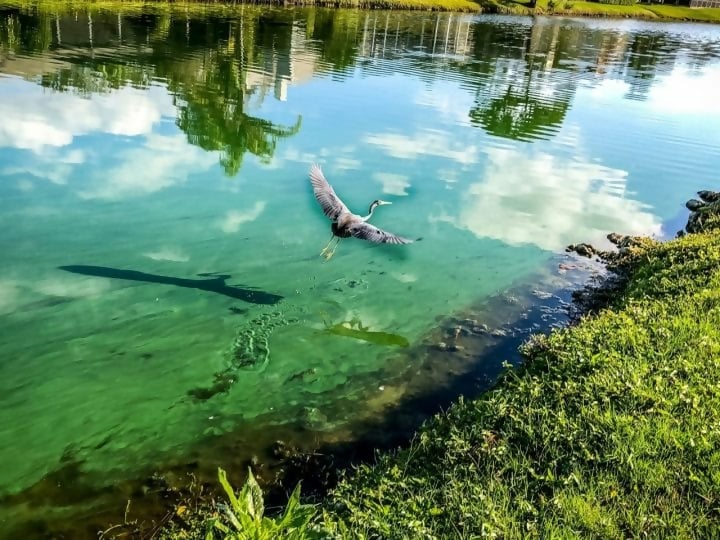
If you are by a lake, ocean, or river and the water smells or is a green color- don’t go in. This could indicate that an algal bloom is occurring in the water. This means there is a lot more algae than normal growing. It’s hard telling if the algae could be harmful, so it’s best to not risk it and just stay away from it. The toxins are capable of killing animals and sometimes humans. Most of the time these blooms occur, because too much fertilizer is polluting the water.
22. If you’re in a cave during a full or new moon, leave immediately
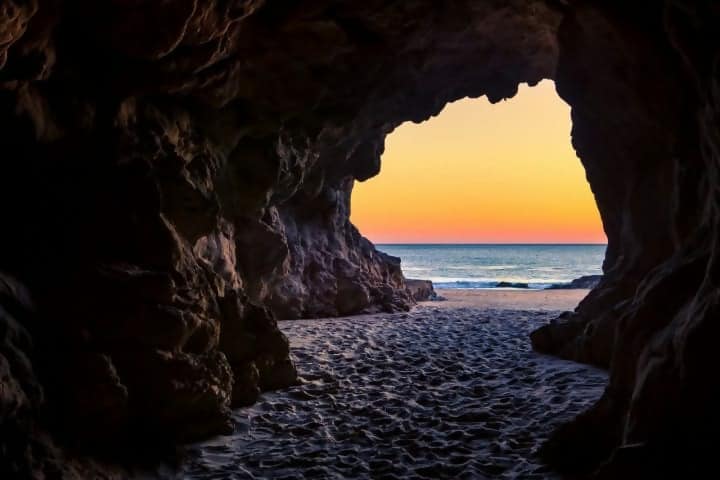
If you are walking along the beach or exploring and you wander into a gorgeous cave alongside a beach, make sure there isn’t a full or new moon. If the tide comes in, you could become trapped. You should always be cautious about the tide when you’re in a cave; however you need to pay special attention during a full or new moon. When the moon is in one of these phases, the tide is called Spring Tide. If the Earth, moon, and sun are all in line, high tide will be exceptionally high.
23. Rattlesnakes let you know when they’re mad
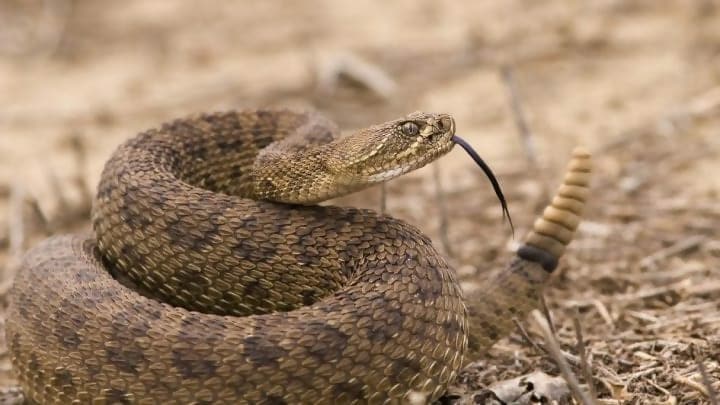
Most people have heard that a rattlesnake will rattle when they’re angry. The rattle sits at the end of their tail. The rattle is made of keratin segments, and when they vibrate these segments knock into each other to make the rattle sound. Whenever, a rattle snake sheds their skin- a new segment is added onto their rattle. The rattle is used to scare predators and enemies from getting too close. The snake is full of venom, but the rattle is used to warn the predator into not biting them.
24. Morning or night- red skies can predict the weather

There’s a bit of truth to that saying, “Red sky at night, sailor’s delight. Red sky in the morning, sailor’s warning.” It turns red, because of the sunlight bouncing off water vapor and dust particles in the air, so that can indicate the weather. Red skies at night means good weather is coming, because the dust particles usually mean there’s a high pressure system. A red sunrise may indicate that good weather is passing, because a low-pressure system and storm are on their way in from the west.
25. Volcanoes swell, get gassy, and shake before they blow

There are warning signs before a volcano erupts such as; there will possibly be small earthquakes under the volcano. It will also, swell and release more gas and heat. Volcanologists are constantly monitoring those signals with radar satellites and other detectors, because some of nature’s warning signs are too subtle to notice without technology. Unfortunately; there’s just an excessive amount of water vapor already in the air, scientists can’t easily monitor the gas an impending eruption releases the most: water vapor.
26. Seek shelter, if you see a funnel cloud in the sky
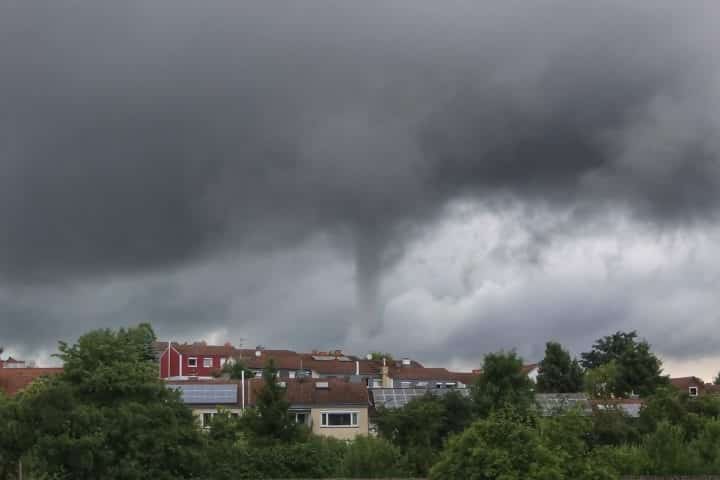
Funnel clouds are coned shaped clouds that protrude out storms. The clouds are made of water droplets condensed together, like any normal cloud. If it’s rotating, it could potentially turn into a tornado. If the clouds were to touch the ground, it then becomes a tornado. Funnel clouds won’t actually cause any damage on the ground. Funnel clouds are only threatening if they are made out of warm air.
27. If there’s a mushroom growing near a tree, don’t eat it
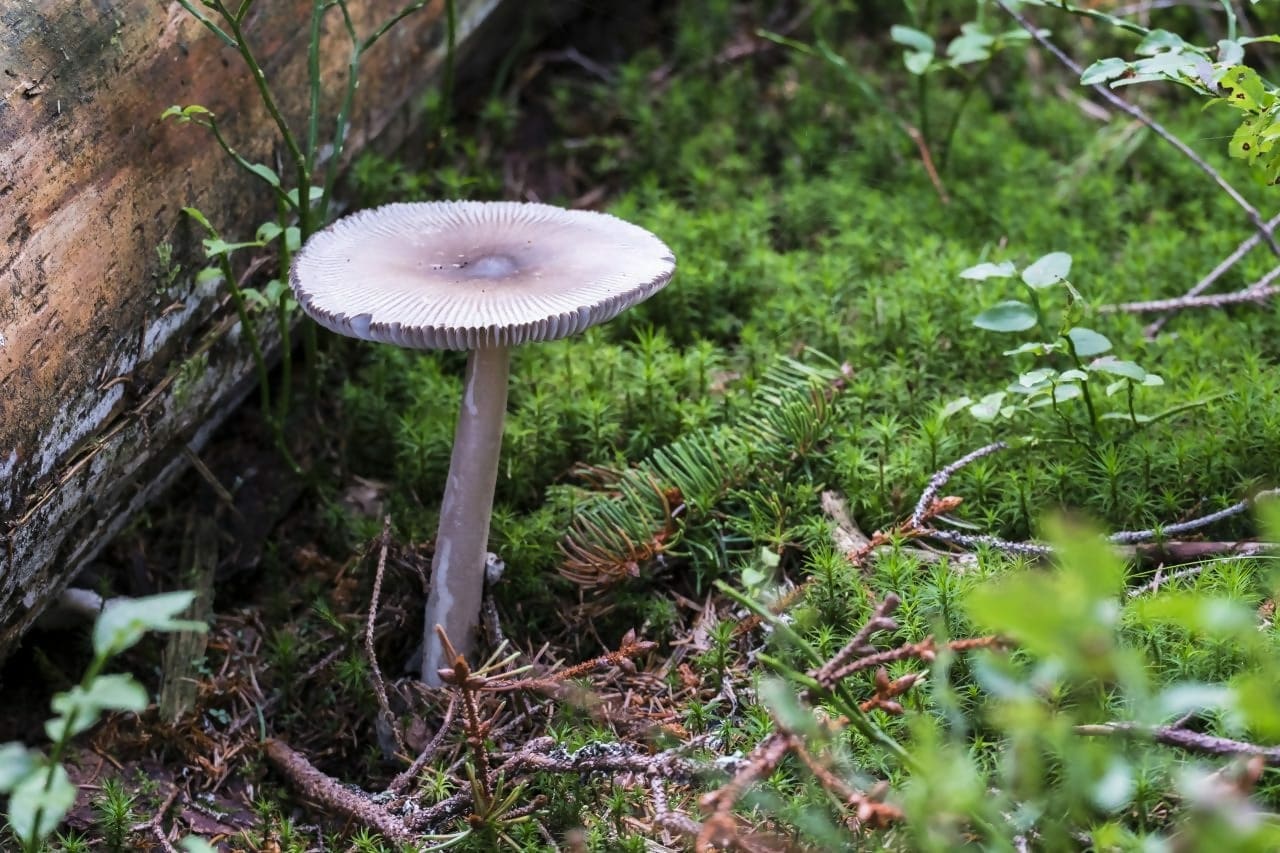
The most dangerous mushrooms belong to the Amanita genus, which includes the “death cap”, and “destroying angel”. It can actually be a difficult task to distinguish different mushrooms from each other. Most Amanitas grow near a tree, its best to stay away from them. In fact; it’s actually best to not eat any wild mushrooms, unless you are an expert at identifying them.
28. Brightly colored animals usually signal danger
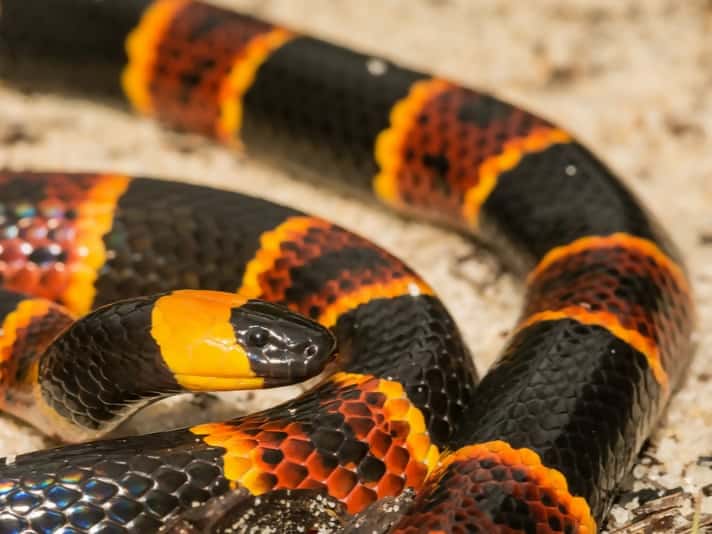
If an animal is brightly colored with orange, yellow, or red, that’s a warning sign for their predators to stay away from them. This is a one sign to let people know they are dangerous. Coral snakes are brightly colored with red and yellow stripes, to let everyone know they are very venomous. The monarch butterfly is beautifully bright to warn birds that they can get very sick if they eat them
29. A tree with missing bark or deep cracks may be a sign that it’s about to fall over
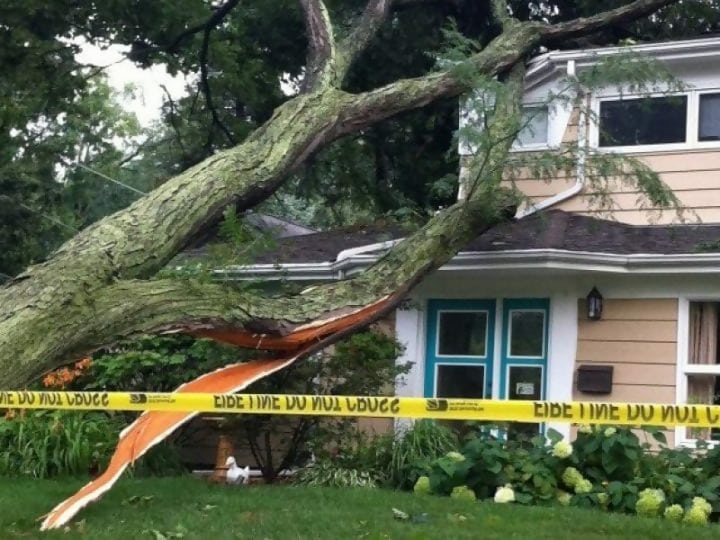
A fallen tree can be dangerous to your life or your home. To avoid this disaster, check the trees near your home. There are several signs if a tree is potentially about to take a dive. Check to see if it has chunks of bark missing, or if it has deep cracks in the bark. More signs that the tree is about to fall over is; falling branches, if the trunk is leaning, and if there’s a hole in the trunk. If your tree has any of these signs, if not all of them- it could be at risk of falling over.
30. Be aware of the warning signs, when a bull is about to charge
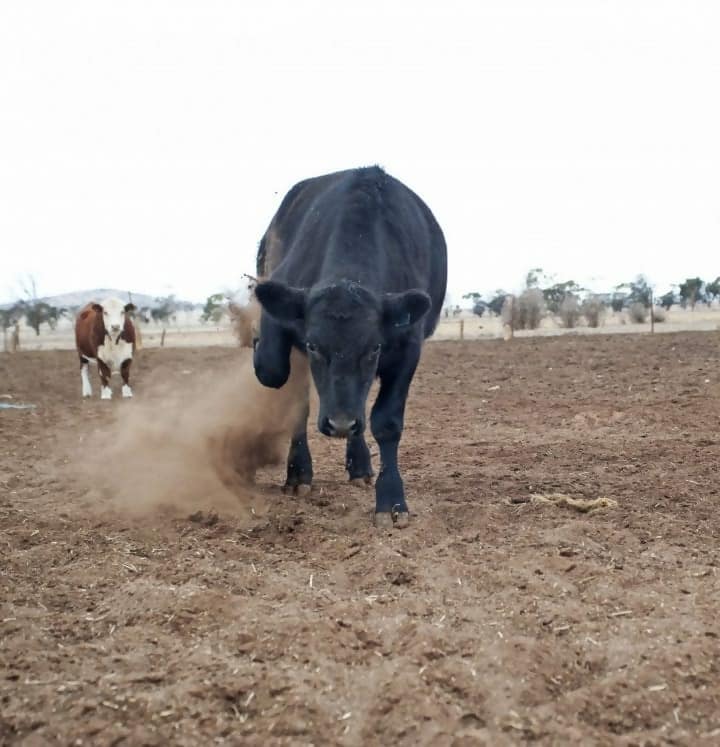
People are scared of sharks, due to the picture movies and the media have created about them- but actually, more people die each year from cows than sharks. It’s important to pay attention to their behavior when around these animals. If a bull or cow is snorting or pawing at the ground, you need to get something in between each other- like a tree. Bulls also like to scare you by showing their side with an arched back and their head down. A sign that he is about to attack is the bull’s head will be lowered and pointing toward its target. Walk backwards to at least 20 feet away and the bull should lose interest, and hopefully you’re out of the danger zone.
31. To predict the weather, listen to the frogs
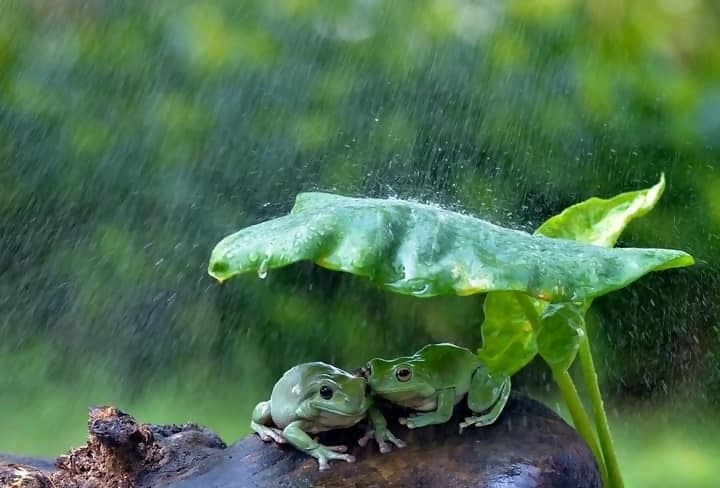
Frogs are known for their croaking, but there are times when they croak more than usual. It could be because it’s about to rain. The reason why they croak more when it’s about to rain is, because they are calling out to potential mates- since they have to lay their eggs in water.
32. Glossy pavement can mean danger during winter
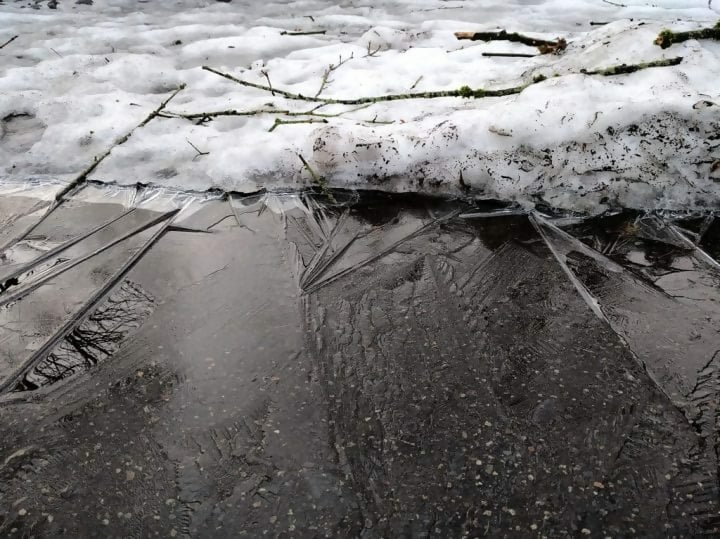
Black ice can be extremely dangerous in the winter. Black ice is not actually black; however, it’s particularly clear ice- that is just hard to see. It can be extremely dangerous if you’re walking, or driving on it. Black ice normally happens when it rains at temperatures near freezing. The water turns to ice as it hits the pavement. Be careful when you drive, and be aware of slippery spots. If it’s slippery in one spot, but dry in the others- that’s a sign it’s probably black ice.
33. Get off the road immediately, if you see a wall of dust
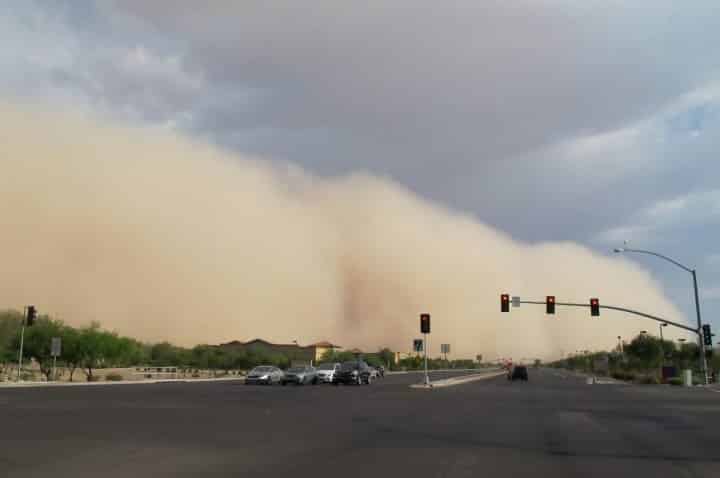
If there’s a cloud of dust coming your way, while you’re driving- get off the road as quickly, but as safely as you can. Make sure your emergency brake is on, and turn off your cars lights. Dust storms can cause intense car accidents, so you will want to safely be in a spot that is out of the way. Make sure you turn off your lights after you park, because the lights may make other drivers go off road and toward you. If you are unable to get off of the road keep your lights on, and drive slowly- honking your horn every once in a while.
34. If a skunk stamps its feet and raises its tail, leave the spray zone quickly
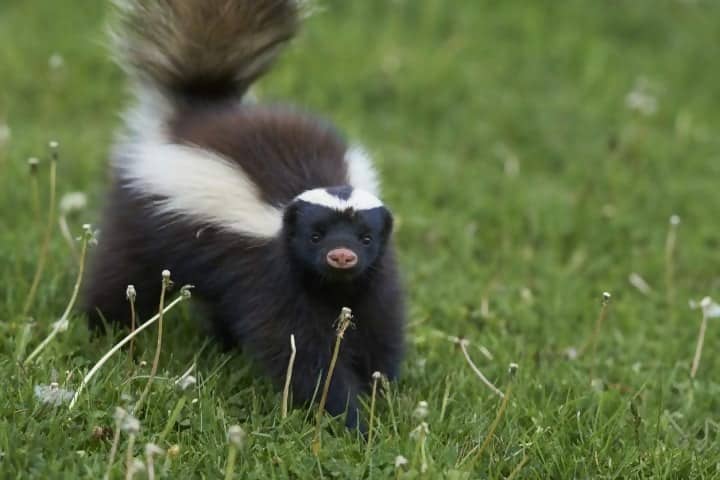
A skunk’s spray isn’t harming, but it’s definitely unpleasant. Mating season is in February, so that’s when you will most likely come across one. Skunks do have limited spray, so they will warn you first before using it. If a skunk raises its tail and shakes it, back away and leave it alone. Signs that the skunk is about to stink you out is; the skunk will stamp his feet, then raise his bottom towards you as a last warning, then it will spray you.
35. If a lake is covered in white or gray ice, stay away from it

Before you skate or walk on a frozen lake, make sure it’s actually safe to walk on. Walking on thin ice is definitely a risk you shouldn’t take. There are some places that have professionals there to check the safety on the ice, but not every lake has the luxury to hire a professional to check it out. If the ice is clear and blue, there’s a possibility it’s okay. If the ice is gray or white, stay away from it. There are tools you can use to check the thickness of it, and that is probably the best route to take before you take the risk of walking on the ice.
36. If you’re stung by a bee near a hive, seek shelter immediately
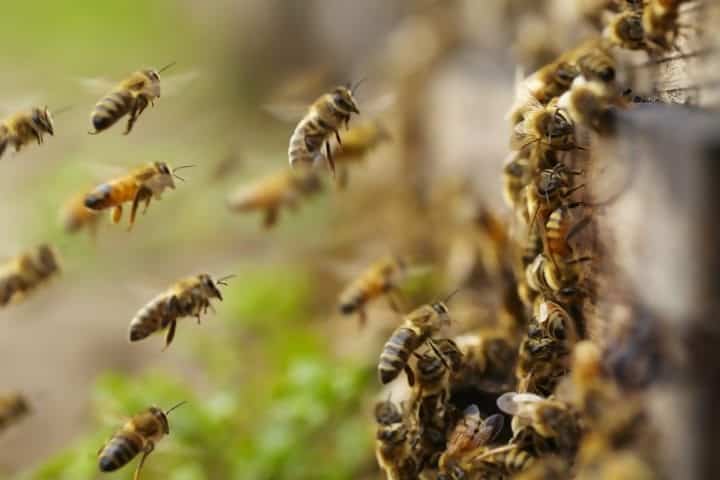
The best thing you can do if a bee is around is to not swat at them. When you get stung, it may seem like the end; however, that may not be the case if you’re around a bee hive. A dead honey bee releases pheromones that call other bees nearby to attack. If you’re near a hive and get stung, seek shelter. Try to cover your head and face the best you can, while running to shelter.
37. If you see a gorgeous colored pool, stay away from it
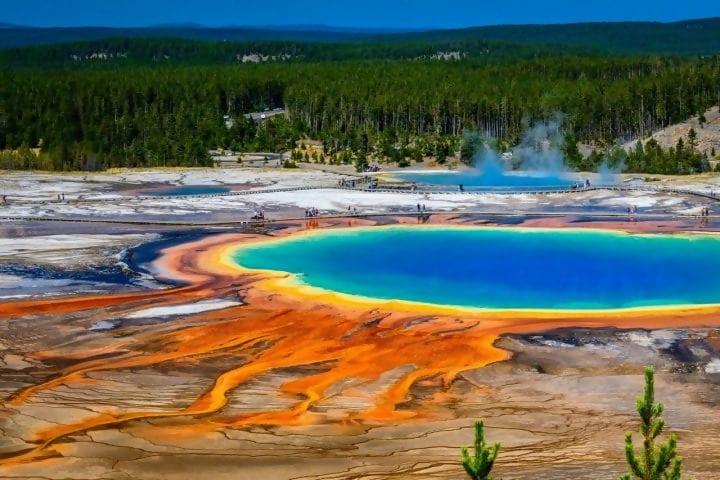
If you see a gorgeous colored hot spring, stay away from it. It could potentially be deadly. They are often at a whopping 200 degrees or more. To compare, a normal hot tub is usually at 105 degrees or under. Bacteria that love exceptionally hot environments give these pools their lovely colors. Each color is due to different bacteria. In the National Park, there are signs indicating if an area is safe or not.
38. If you see scratch marks and five-toed paw prints on trees, be aware

When you’re in a bear environment, it’s best to always be on the lookout for bears or signs of them. You may come across paw prints in the ground that are large with five toes and claws. You may also see scratch marks on nearby trees. There are a few more warning signs of bears, such as tufts of fur and their scat. If you see a bear, avoid eye contact at all costs, and don’t run. Slowly wave your arms, to make yourself as big as possible. Talk slowly in a hush tone, as well. To get out of the situation, move away slowly- sideways.
39. Don’t eat any red berries in the wild

It’s for the best, if you don’t eat anything in the wild- unless you know for certain what it is. There are several kinds of berries that are poisonous to humans. Dogwood berries are eaten by birds but are not safe for humans, cotoneaster berries can cause seizures, and holly berries can cause vomiting. Call poison control immediately, and get to the hospital if you or someone you know has eaten any mysterious berries. When you go on a hike, pack your own snacks.
40. Ecosystem canaries can warn scientists about an ecosystem’s collapse
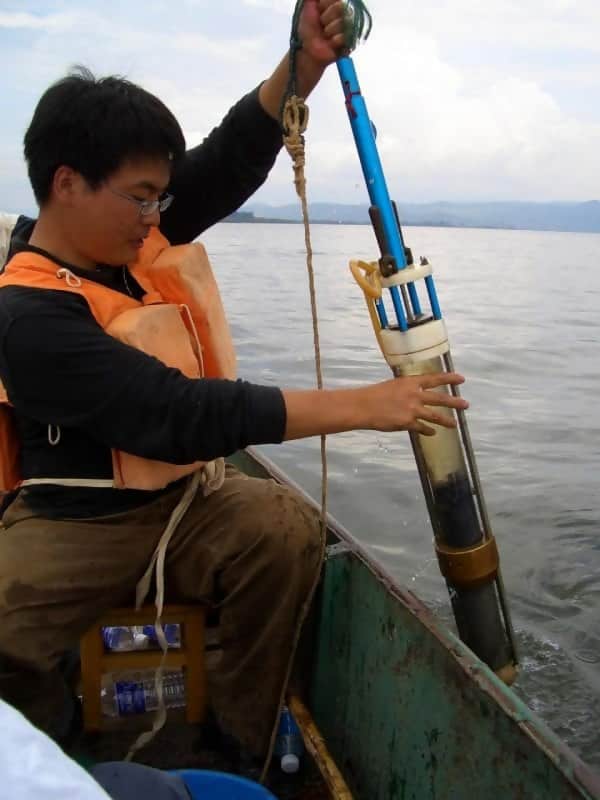
Coal miners once used canaries to check for poisonous gasses underground. Scientists now are look to “ecosystem canaries” to check the health of an ecosystem. These are not actually canaries, but they are species that have started dying even before the entire ecosystem collapses. They usually reproduce slowly and aren’t the best at competing for resources. Scientists hope to identify ecosystem canary species, then use them to monitor ecosystems before they are passed the point of saving.
41. Plant and animal range shifts warn of climate change
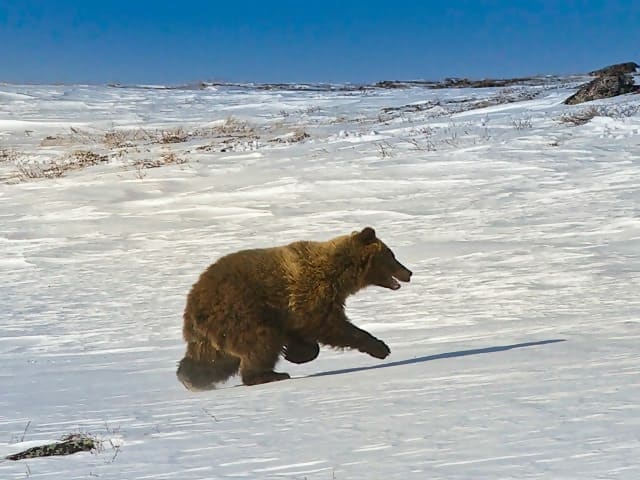
The first sign of climate change is the shifting of plant and animal ranges. A range is a place where a species naturally occurs, based on the rainfall, humidity, temperature, and other natural factors. These factors are modified by climate change. For instance, grizzly bears are moving north and stepping into polar bear territory. Scientists are estimating, that half of all living species are moving to a new place.
42. There’s no actual warning of quicksand, but it’s possible to get out
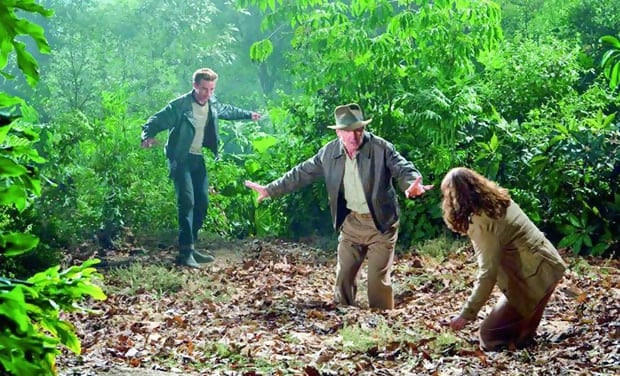
Quicksand is featured in a lot of movies; however, there are a lot of misconceptions about how it truly works. You can’t actually drown in quicksand, and you shouldn’t grab a stick or a rope to pull yourself out. Quicksand is very dense. It is denser than your body, so while your foot will initially sink into the sand- you will only sink about halfway down. If the tide comes in, that’s where the danger of drowning comes in. In order to get out, you have to wiggle your leg a bit and calmly step up. Pushing your body to lay horizontally will help at some point- and eventually you will float back to the top. If there are gaseous bubbles in the quicksand, you will actually be denser than the quicksand and sink.








